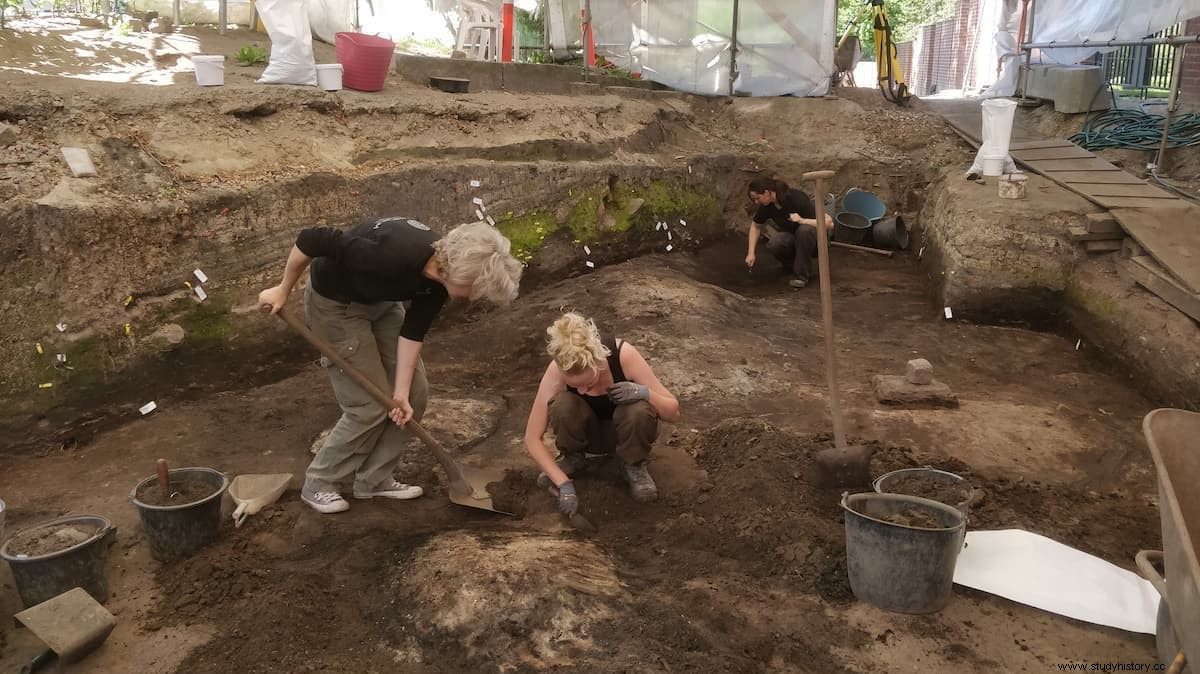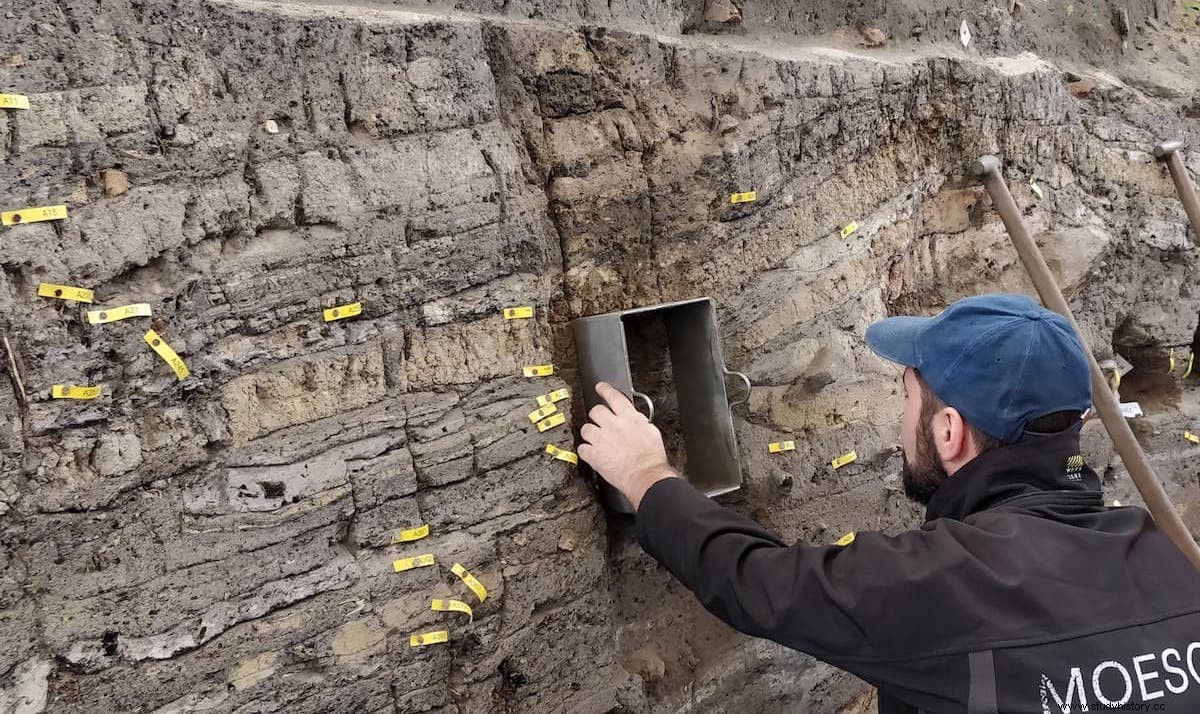An interdisciplinary team of Danish researchers has used new astronomical insights to establish an exact time frame for the arrival of trade flows from the Middle East to Viking Age Scandinavia. The results are published in the prestigious international journal Nature .
Mobility profoundly shaped the human world long before the modern era. But archaeologists often struggle to establish a timeline for the speed and impact of this mobility. An interdisciplinary team of researchers at the Danish National Research Foundation's Center for the Evolution of Urban Networks (UrbNet) has now made a breakthrough by applying new astronomical insights into the sun's past activity to establish an accurate time frame for global connections in the year 775 of the Christian era.
In collaboration with the Southwest Jutland Museum in the Northern Emporium project , the team has carried out a major excavation at Ribe, one of the major trading towns of the Viking Age. Funded by the Carlsberg Foundation, the excavation and subsequent research project established the exact sequence of the arrival of objects from various corners of the world to the Ribe market. In this way, they were able to trace the emergence of the vast network of Viking Age trade connections with regions such as North Atlantic Norway, Frankish Western Europe, and the Middle East. To obtain a timeline of these events, the team has pioneered the use of radiocarbon dating.

The applicability of radiocarbon dating has so far been limited due to the wide age ranges of this method. However, it has recently been discovered that solar particle events, also known as Miyake events, cause sharp spikes in atmospheric radiocarbon during a single year. They are named after the Japanese researcher Fusa Miyake, who first identified these events in 2012. When these peaks are identified in detailed records such as tree rings or in an archaeological sequence, the margins of uncertainty are greatly reduced , says lead author Bente Philippsen.
The team applied a new, improved calibration curve, based on annual samples, to identify a Miyake event from 775 AD. in a Ribe soil layer. This allowed the team to anchor the entire sequence of layers and 140 radiocarbon dates around this single year.
This result demonstrates that the expansion of Afro-Eurasian trade networks, characterized by the arrival of a large number of accounts from the Middle East, can be dated in Ribe precisely to the year 790±10 of the Christian era, coinciding with the beginning from the viking age. However, imports brought by ship from Norway were already arriving in the year 750 of the Christian era , says Professor Søren Sindbæk, who is also a member of the team.

This revolutionary result calls into question one of the most accepted explanations for maritime expansion in the Viking Age:that Scandinavian shipping took off in response to growing trade with the Middle East through Russia. Maritime networks and long-distance trade were already established decades before impulses from the Middle East caused further expansion of these networks.
The construction of the new annual calibration curve is a global effort to which researchers from UrbNet and the Aarhus AMS Center of the Department of Physics and Astronomy at Aarhus University have contributed.
Constructing a calibration curve is a huge international effort with contributions from many laboratories around the world. The discovery of Fusa Miyake in 2012 has revolutionized our work, so that we now work with an annual temporal resolution. New calibration curves are published regularly, the latest in 2020, and the AMS center in Aarhus has contributed significantly. The new high-resolution data from the present study will feed into a future update of the calibration curve and thus contribute to improving the accuracy of archaeological dates worldwide. This will provide better opportunities to understand rapid developments such as trade flows or past environmental changes , says Jesper Olsen, associate professor at the AMS Center in Aarhus.

The global trends revealed by the study are essential to the archeology of commercial cities like Ribe. The new results allow us to date the influx of powerful new artifacts and contacts against a much better background. This will help us visualize and describe the Viking Age Ribe in a way that will be of great value to scientists, as well as help us introduce the new knowledge to the general public , says Claus Feveile, curator of the Southwest Jutland Museum.
One of the most spectacular episodes of pre-modern global connectivity took place in the period between 750 and 1000 AD, when trade with the burgeoning Islamic empire in the Middle East connected virtually every corner of Afro-Eurasia.

The spread of coins, trade beads, and other exotic artifacts provides archaeological evidence for trade links that stretched from Southeast Asia and Africa to Siberia and the northernmost reaches of Scandinavia. In the north, these long-distance connections mark the beginning of the seafaring adventures that define the Viking Age. Researchers have even suggested that it was the arrival of silver and other valuables through Eastern Europe that triggered the first Scandinavian Viking expeditions.
However, it has been difficult to establish the time of the arrival of beads and coins from the Middle East in relation to other events in the Viking world, including the famous raids that rocked Western Europe beginning around 790 AD.
